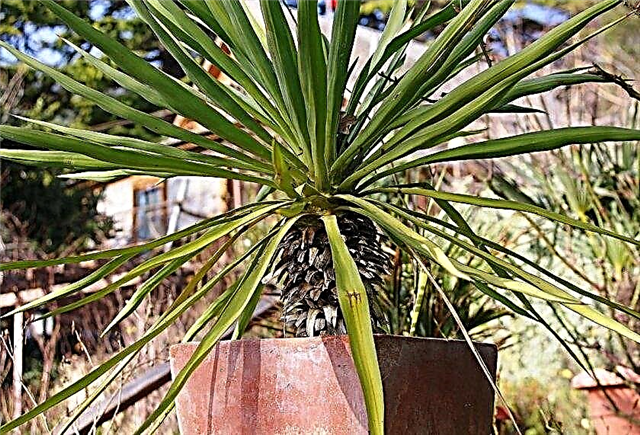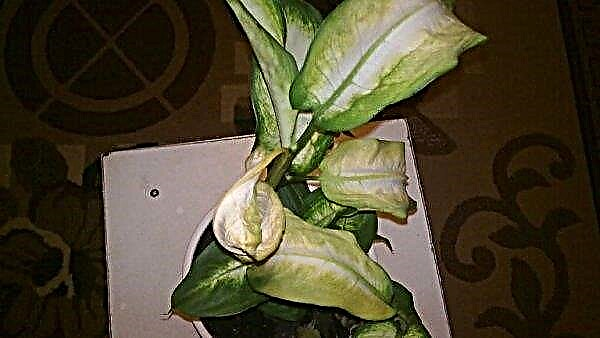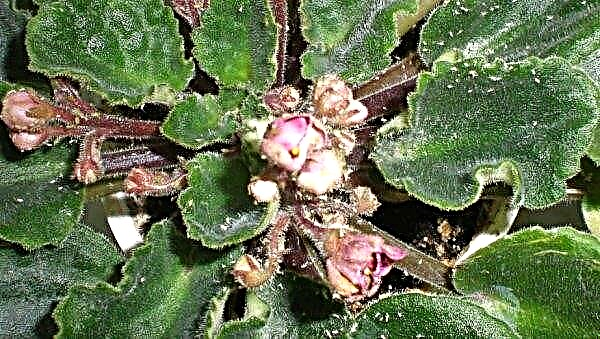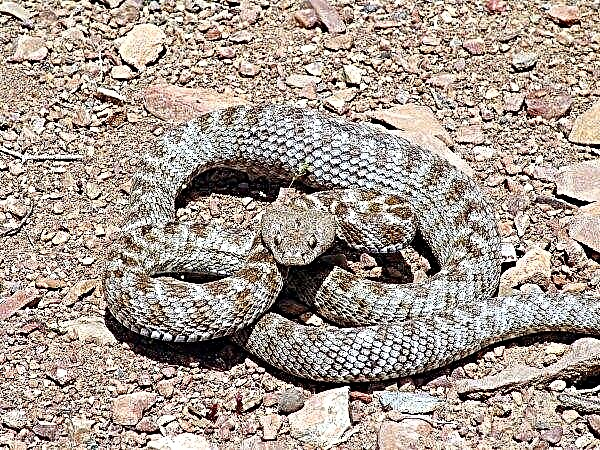Many decorative flowers, when they are grown in the open ground, after flowering is completed, or for the winter, must be dug out of the ground to preserve their health and beauty. First of all, this refers to the category of plants that propagate by bulb or tuber. Is it necessary to carry out this procedure with regard to the tulip, why should it be done, what is the most successful time period for such work, and why, how to store dug planting material correctly, at what time of the year you can plant a flower on a flower bed again and how to prepare it for planting - all of this will be discussed below.
Do I need to dig up tulips every year?
Tulip is a common flower and loved not only by gardeners, but also by breeders. According to some estimates, today in the world there are more than 10 thousand species of this primrose, and not every variety or hybrid should be pulled out of the ground annually and put away for storage, some can be left in the garden for years. To understand whether to dig or not to dig a tulip, it is enough to clarify which variety the plant belongs to.
The modern approach to the classification of tulips involves dividing them into 4 groups and 15 classes. The groups combine flowers that differ in maturity (early, middle and late), in addition, the last, fourth, group includes not breeding, but wild-growing species.
In a generalized form, information about groups and classes of tulips has the following form:
| Group | Classes |
| 1st (early flowering period) | simple terry |
| 2nd (average flowering period) | Darwin Triumph Hybrid |
| 3rd (late flowering period) | simple terry and lily colored fringed parrot green Rembrandt hybrids |
| 4th (wild and hatched based on them) | Kaufmanasorta varieties and hybrids and Fosterasorta hybrids and Greigavse hybrids other species, varieties and hybrids |
It is especially important to comply with this requirement for the following three classes of late tulips:
- parrots;
- fringed;
- green flowers.
Important! All classes related to late flowering should be removed annually from the soil and, after some time, again planted in the ground, the only way to ensure their lush flowering and preserve decorative characteristics.
The main purpose of regularly digging up varietal varieties of tulips is to preserve their hereditary properties. But there are other reasons for this procedure. Every bulbous plant is characterized by annual renewal and propagation of the “root”: several young ones appear next to the main bulb, one of which becomes a substitute.
In the process of breeding late-flowering varieties and hybrids, breeders tried in every possible way to accelerate the intensity of their reproduction, thus, small young bulbs begin to develop rapidly, crowding each other and fighting for the feeding area. If at this moment you do not remove the bulbs from the ground and subsequently do not plant them at a sufficient distance, the normal growth of both the "old" tulip and its "children" will be impossible.
 Too close planting leads not only to the fact that the flower becomes small over time, loses color brightness and inherent features of the variety. In such conditions, the plant often becomes a victim of diseases, including fungi and infections.
Too close planting leads not only to the fact that the flower becomes small over time, loses color brightness and inherent features of the variety. In such conditions, the plant often becomes a victim of diseases, including fungi and infections.
It is also necessary to dig out bulbs of hybrid tulips because varieties belonging to the third group are able to form a full-fledged bulb only in a much warmer climate than the one that happens in the middle lane in summer. So, for example, fringed tulips plant a healthy large bulb only when the temperature of the soil at its location (12–15 cm) is from +25 to + 27 ° С.
For other late-flowering varieties, this average value is slightly lower, but still in Russian realities, even in July, the temperature regime does not reach the required level. Therefore, if you remove the bulb from the ground at the right time and leave it in a suitable place, you can achieve its full warming up and, accordingly, rapid development in the future.Did you know? Today everyone can buy a bouquet of tulips, and 300 years ago in Europe the cost of such a flower was comparable to the price of a residential building. So, for example, a Dutch worker needed 10 months to work to buy a plant, the cultivation of which he was engaged in.
When and how do they dig tulips?
The right time to extract the bulbs from the ground is an important point in agricultural technology. There is no direct relationship with a specific calendar period, so the issue needs to be approached individually. Specialists recommend first of all to look at the vegetative state of the plant itself, and it, in turn, may vary depending on variety, climate zone and weather conditions in the current year.
You can start harvesting bulbs only when the tulip has completely stopped blooming and has begun to enter the dormant phase. This is manifested as follows: the outer leaves of the plant turn yellow and dry, and the stem and inner leaves become more faded. At this stage, the vital juices of the tulip should already be in the bulb, which means that the time has come to get it from the ground.
If you hurry with the start of work, the plant will not have time to take all the nutrients laid out from the ground, as a result of which its subsequent development may suffer. But to miss the deadline is also dangerous: over time, the entire green part of the flower located on the surface dies, dries and completely falls off, as a result, it becomes difficult to find the bulbs in the ground, and attempts to dig them out at random can lead to cutting the bulb in half. In this case, the material completely loses its viability, and it can no longer be planted next fall.Important! Adjusted for the factors listed above, you need to dig tulips in the summer period - from the end of June to mid-July. Too early in the spring, late in August.
 Tulips should be removed from the ground very carefully so as not to damage the nest. Many gardeners use a shovel as a tool, but with insufficient experience it is not worth facilitating their work, so it is better to arm yourself with a pitchfork. You also need to remember that young "children" can be located a few centimeters around the circumference of the main bulb, so you need to plant a garden tool in the ground at a fairly distant distance from the plant stem.
Tulips should be removed from the ground very carefully so as not to damage the nest. Many gardeners use a shovel as a tool, but with insufficient experience it is not worth facilitating their work, so it is better to arm yourself with a pitchfork. You also need to remember that young "children" can be located a few centimeters around the circumference of the main bulb, so you need to plant a garden tool in the ground at a fairly distant distance from the plant stem.
What to do with dug tulip bulbs?
Tulip - a flower is not very demanding, but in order for the plant to not be sick and frail, the dug out bulb must be properly prepared for subsequent storage.
How to dry
The first prerequisite that must be met is that the bulbs should never be separated from the stalks in a "violent" way. The aboveground part will fall off itself if the dug plant is well dried.
After digging a tulip out of the ground along with the root, you need to carefully shake it off to remove large clods of earth, and then place it in a dark place for 1-2 weeks. This time is enough to completely dry the stem and leaves. After that, the bulb itself will separate from the aboveground part and all that remains to be done is to remove the already unnecessary “tips”, focusing on the “roots”.
If desired, you can dry the dug up tulips in limbo, in this case, the stems should be tied together like a broom. However, this method is less preferable, because in the process of drying the stems, the bulbs can begin to fall off, and the fall of planting material, even from a not very high height, will certainly not positively affect its viability.
Storage preparation
The next steps in preparing tulips for storage is their initial inspection. A diseased or damaged bulb will not turn into a healthy flower, therefore it is advisable to immediately select and discard all instances with signs of decay, integrity, diseases and other defects.
Then the material must be sorted by size and ripening period. The onion and the “children” are stored separately, the latter being previously divided into categories (in professional language they are called “parsing”).Important! The tulip bulb can be stored and planted completely naked, this possibility is considered acceptable. But the recommended or, especially, mandatory procedure is not.
The generally accepted classification is as follows:
| Size | Diameter cm |
| First parsing | 1,5–2,5 |
| Second parsing | 2,5–3 |
| Third parsing | 3–3,5 |
| Extra Category | 4 and more |
Often, gardeners have the question of whether to remove scales from tulips, that is, to "undress" them. The recommendation here is very simple: those fragments of the husk that, during the initial drying process, partially lagged behind the main “body”, need to be removed, but it is not necessary to specifically tear off the petals of the protective shell. Excessive efforts in this case should be tempered; they are not needed for the plant.

To prevent damage to planting material by infections, as well as to neutralize possible pathogens that have been preserved in it (fungi, bacteria, parasite larvae), tulips should be sanitized before being stored.
To do this, you can use:
- a weak solution of potassium permanganate (potassium permanganate);
- aloe juice, diluted in equal parts with water;
- "Fundazole" or any systemic fungicide (the solution is prepared in accordance with the manufacturer's instructions);
- clean water heated to + 50 ° C.
 After soaking the material in any of the mixtures listed for 10-15 minutes, the tulips must be removed, laid out on a clean surface covered with paper towels or other water-absorbing material, and allowed to dry completely. Even if there is a slight moisture residue, the bulbs will not be stored and will rot before autumn.
After soaking the material in any of the mixtures listed for 10-15 minutes, the tulips must be removed, laid out on a clean surface covered with paper towels or other water-absorbing material, and allowed to dry completely. Even if there is a slight moisture residue, the bulbs will not be stored and will rot before autumn.
Some summer residents for the purpose of disinfection spray bulbs with copper sulfate, karbofos or other similar potent pesticides. For use at home, such drugs are too dangerous, so it is better to do with less dramatic methods of prevention.
Storage conditions
To the place where tulips will be stored until the time of planting, several fundamental requirements are presented. First of all, it should be warm and dry, in addition, it is important to provide good ventilation and protection from bright sun.
Did you know? Red tulip is a globally recognized symbol of the fight against Parkinson's disease and the emblem of the international foundation founded for its treatment. In this way, the memory of the Dutch gardener Van der Wereld was immortalized, which a terrible disease did not prevent in 1980 to create a new variety of this flower.
Temperature is very important. The fact is that during storage, the future flower is laid in the planting material. As already mentioned, at this moment, the tulip needs intense heat. The specific parameters depend on the variety, however, in any case, the thermometer in the room where tulips are stored should not fall below + 23 ° С, and + 30 ° С is considered an acceptable maximum. It is important to ensure such conditions during the first month after digging the bulbs, but it is advisable to reduce their heating further so as not to provoke the development of pathogenic microflora or complete dehydration (drying out).

The optimal conditions for long-term storage of planting material is the temperature range + 17 ... + 20 ° С, moreover, as the autumn period approaches, the air should become more and more cool. If the bulbs remain out of the ground for the entire winter period, sometimes they are even placed in the refrigerator, in the section for vegetables and fruits. But elite varietal tulips of the third group do not tolerate such conditions well, so it’s not worth the risk.
Humidity at this stage must be ensured high enough so that the plant does not lose viability, but this indicator should not rise above 70% in a living room, otherwise rotting or rotting processes may begin.
Proper storage of bulbs
It is better to store tulips in open containers, for example, in a wooden box, box or basket made of natural material. A plastic container is not suitable for these purposes. In addition to the fact that the planting material begins to shine without good ventilation, tulips during storage process emit a harmful organic compound C2H4 (ethylene), which negatively affects the viability of the plant itself.

It is also undesirable to allow direct contact with each other of individual copies, since if one of them is infected, the infection can spread to neighbors. Therefore, experienced gardeners pour a container with onions, sand, sawdust or peat, providing at the same time a kind of pillow. In this case, even plastic bags are suitable for storage, in which you need to pre-make small holes for ventilation, and after laying the tulips - tie and place in an open box so that the contents of the bag do not wake up on the floor.
Even under properly created conditions, the bulbs must be constantly “looked after”: at least 2-3 times a month it is recommended to remove them from the storage tank and inspect them. When the first signs of mold or rot appear, you can try to save the flower by carefully cutting the damaged area with a sharp knife, and sprinkle the cut with ash or grease with hydrogen peroxide. If the disease spreads to a wider territory, the onion will only have to be thrown away to save the remaining specimens, but even with a small lesion, it must be stored in the future separately.Did you know? Flower bulbs in the Netherlands sold very expensive in mid 17th century. Each of them was more expensive than the house of a person with an average income.
Video: storage of tulip bulbs
There is another way to store tulips - in ash. Such material is an excellent natural antiseptic and allows you to stop any pathogenic processes in the bud. In addition, ash prevents wetting and overheating of the bulbs, compensating for excess moisture in the air, and also nourishes the plant with potassium. It is only important that the soot used is not soot left in the fireplace after burning out obscure materials, but crushed into dust and sifted coals from fruit trees.
When do dug tulips land?
Tulips belong to primroses, and therefore it is customary to plant them in open ground in the fall, then already with the first warm rays of the sun they will give friendly shoots, and after a few weeks they will begin to delight with bright colors. The calendar dates, as in the case of digging bulbs, depend on the climatic zone and weather conditions, but you need to focus on the end of September - mid-October. It is important that the land in the garden has cooled down, at least to + 7 ... + 10 ° C, so that the flowers do not inadvertently begin to sprout. If this happens, in the next years of flowering, you can no longer wait.
You can plant tulips even later - a couple of weeks before the frost arrives, but in this case it is recommended to thoroughly mulch the planting site with fir branches or foliage so that the bulb has time to take root before a serious cold snap.Did you know? Tulip is usually a large bright flower on a long stem. However, breeders have bred varieties in which four buds bloom on one plant at once.

However, if for some reason the fall did not work out with a landing, the procedure can be rescheduled for spring. This option is not common, but possible.
But it has three important disadvantages:
- A tulip planted in spring begins to bloom much later than its “brethren,” which is undesirable for a primrose, because its main value is to please the eye when most other plants have just begun to wake from hibernation.
- In February, when daylight hours begin to increase, and under natural conditions (in the open ground), tulips gradually wake up, with the bulbs left for storage, the same process takes place. Before time, the sprouted material was difficult to maintain until warming enough, and it had to be urgently planted, and only then moved to a permanent place.
- Too late, the planted flower does not have time to form in time before the end of the season and may freeze next winter.

It is not difficult to grow tulips, but nevertheless, this flower has features that a gardener needs to know. Although the plant is perennial, it is impossible to leave it without a transplant for a long time, and the more decorative and unusual the variety is, the more often it needs to be dug up. During such a procedure, if the bulbs extracted from the earth are properly stored, the florist will be able to enjoy a flower bed that does not lose bright colors from year to year.












